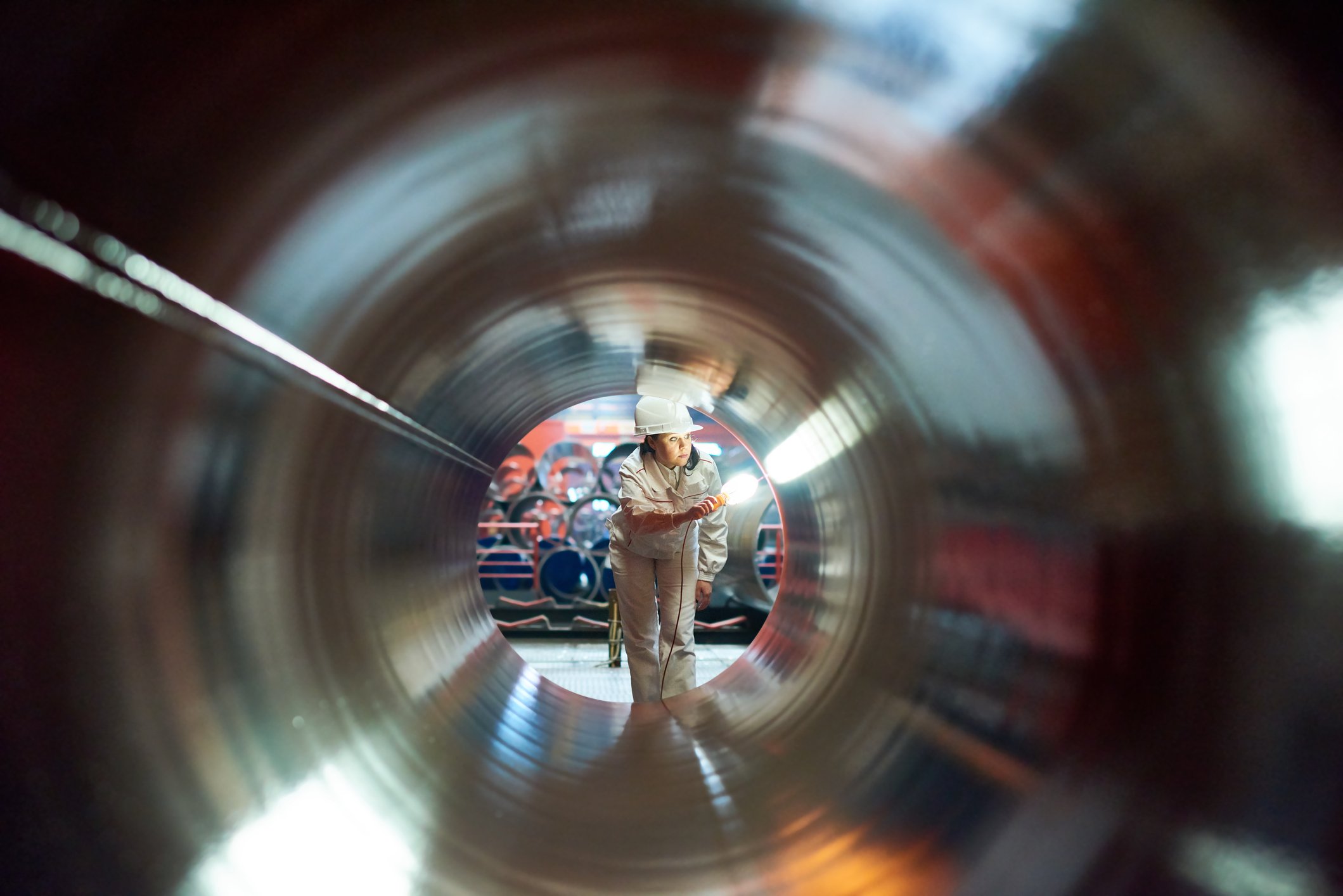Natural gas pipeline giant Williams Companies (WMB +2.09%) and its MLP Williams Partners (NYSE: WPZ) reported mixed second-quarter results after the close Wednesday. Earnings declined fractionally due to asset sales and some higher costs. Cash flow, on the other hand, moved slightly higher thanks in part to lower interest expenses as a result of debt reduction. However, while both numbers underwhelmed in Q2, they should head much higher in the coming year because Williams has several expansion projects under way that should boost its bottom line.
Drilling down into the results
|
Metric |
Q2 2018 |
Q2 2017 |
% Change |
|---|---|---|---|
|
Adjusted EBITDA |
$1.110 billion |
$1.113 billion |
(0.3%) |
|
Cash flow available for dividends |
$375 million |
$360 million |
4.2% |
|
Dividend coverage ratio |
1.33 times |
1.45 times |
(8.3%) |
Data source: Williams Companies. EBITDA=earnings before interest, taxes, depreciation, and amortization.
Williams Companies earnings dipped in Q2 mainly due to the sale of the assets in Williams Partners' natural gas liquids (NGL) and petrochemical (petchem) services segment, and some issues in its Atlantic-Gulf business unit:

Data source: Williams Partners. Chart by author.
Driving the Atlantic-Gulf segment's 1.3% decline was a significant decrease in volumes on the deepwater Discovery system's Hadrian field, as well as higher operating and maintenance expenses. These factors more than offset the incremental income gains it accrued by placing five expansion projects on its Transco pipeline into service last year, and bringing a portion of the Atlantic Sunrise project online in 2018.
On a more positive note, earnings in the West segment rose nearly 5%, thanks mainly to an increase in NGL and marketing margins. Meanwhile, profits in the Northeast gathering and processing (G&P) segment rose 3% due to higher volumes on the Susquehanna and Ohio River systems.

Image source: Getty Images.
A look at what's ahead
The most significant event coming up for Williams Companies in the near-term is its acquisition of the 26% of Williams Partners that it doesn't already own. The company has scheduled a special meeting of shareholders on Aug. 9. to vote on the $10.5 billion transaction. Once that deal closes this fall, the MLP will become a wholly owned subsidiary, simplifying Williams' organizational structure, improving its credit profile, and increasing its dividend coverage.
Meanwhile, Williams Companies recently announced several strategic moves that position it for additional growth. First, the company and its 50-50 joint venture partner, Crestwood Equity Partners (CEQP +0.00%), agreed to expand their Jackalope Gas Gathering System and the associated Bucking Horse gas processing plant in Wyoming's Powder River Basin to support the growth of Chesapeake Energy (CHK +0.00%). Williams and Crestwood expect to finish the first phase of this expansion by the end of 2019, which coincides with Chesapeake's plan to double its output from the region in the next year. They also noted that further expansions of the system might be needed soon, since regional growth could use up all its capacity by 2021.
In addition, Williams is partnering with a private equity fund to buy a stake in Discovery DJ Services, which is a gathering and processing company based in Colorado. As part of that deal, Williams will invest $250 million in expanding Discovery's footprint over the next few years.
To finance these new initiatives, Williams Companies has increased its growth capital budgets for 2018 and 2019. The company now plans to invest $3.9 billion this year (up $800 million from its prior guidance) and $2.6 billion in 2019 (an increase of $200 million). The company had previously forecast that it would be able to boost cash flow by 9% this year and 13% in 2019, but its enhanced spending plan should enable it to grow cash flow at an even faster clip.
An acceleration is on the way
While Williams Companies' earnings slipped and cash flow barely grew in Q2, that quarter's issues were just a temporary blip. The company has a growing slate of expansion projects under way that position it for much faster growth in the second half of 2018 and into next year. Because of that, the company looks like an attractive option for investors, especially when factoring in its well-covered 4.5%-yielding dividend, which the company still expects to increase by 10% to 15% next year.






